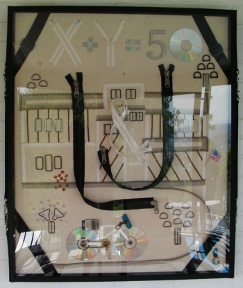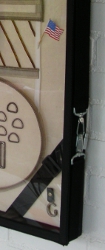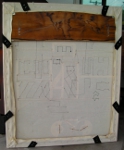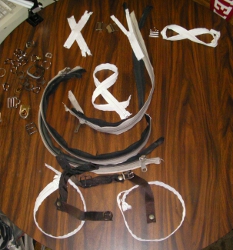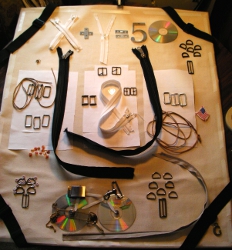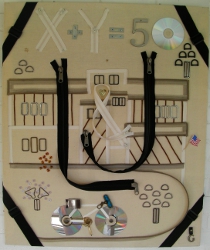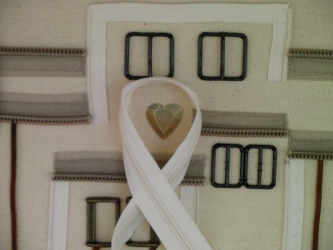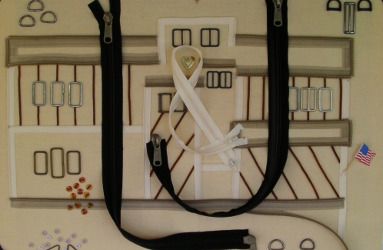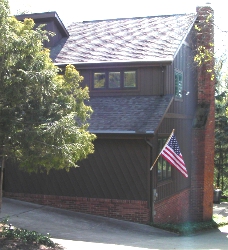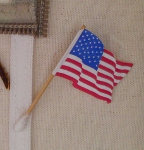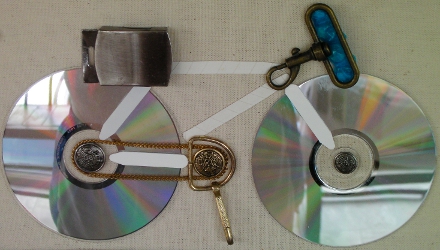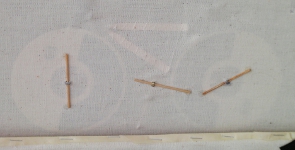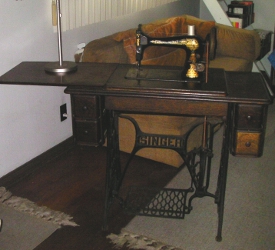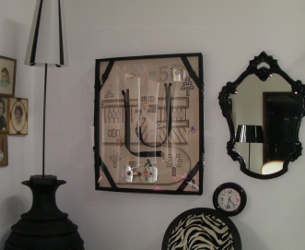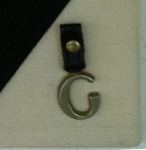The zippers were sewn onto the canvas with my 112-year old Singer Sewing Machine. The machine was given to my grandmother as a hand-me-down in the 1930s. I contacted Singer with the serial number, B874419, and was told that it was manufactured at the Elizabethport factory in Elizabethtown, NJ on February 6, 1905. It is a Model 27, and 40,900 were manufactured during that month. I was able to download an Operating Manual that actually covers Models 27 and 28.
The sewing machine is treadle driven via a leather belt. I have had to replace the belt with one that I bought on the Internet. When I was growing up, I remember having to repair the belt when it stretched, or the ends pulled away. The ends are connected with a large metal staple that pierces the two ends of the belt. The sharp legs of the staple are folded tight against the belt to form a rectangle. The staple needs to crimp the belt ends tightly, so it will smoothly travel at high speed around the drive wheel and up to the machine head. I still used that same staple for connecting the ends of the new belt.
About 20 years ago, I had to replace a broken needle. When it broke, I was upset. I thought there was little chance of finding a needle that would fit this old machine. (That was before you could search for things on the Internet.) I was surprised that a nearby Singer Store had replacement needles. All of the other parts are original.
While I'm rambling on about the sewing machine, I have seen three other Singer treadle machines. One was in a display at Epcot Center, where they were showing household appliances from different decades. That was in June of 1986, during a family vacation to Disney World. The next one was during my 2015 Erie Canal Bike Ride. I saw it at the Chittenango Landing Boat Museum in Chittenango, NY on June 16, 2015 at one of our rest stops. The most recent was during the Katy Trail Bike Ride on May 25, 2017. It was in my attic room of the Red Brick Inn in Augusta, MO, where I stayed overnight. |
|
